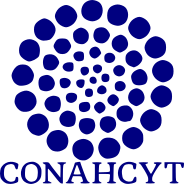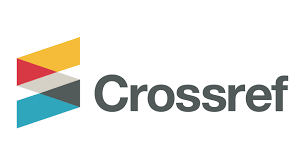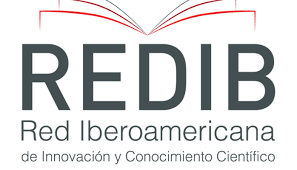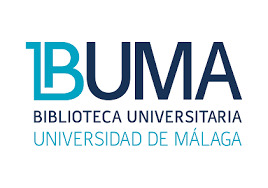Effect of altitude, orientation, and slope of the terrain on the distribution of macrofungi in a deciduous tropical forest on the coast of Oaxaca, Mexico
DOI:
https://doi.org/10.18387/polibotanica.57.5Keywords:
Macromycetes, Deciduous tropical forest, Topographic parameters, life forms, distribution patterns, substrate preferencesAbstract
Macrofungi, with their extraordinary diversity and ability to adapt to various substrates, play crucial ecological roles in ecosystems. However, their development is strongly influenced by the interaction of several environmental factors. Understanding these factors and their impact on the distribution of fungi is essential to understand their ecological dynamics. To obtain data how these organisms are distributed under certain topographic factors, an analysis of the species richness of macrofungi was carried out in a tropical deciduous forest on the coast of Oaxaca, taking both the eco-nutritional habits and substrate on which they develop in response to altitude, slope and terrain orientation.
A review was conducted of a field database of 251 biological samples representing 169 species of macrofungi registered in the Environmental Management Unit for the Conservation of Wildlife "Jardín Botánico-Puerto Escondido". The review was used to assigned a life form (parasitic, mutualistic micorrhiza, saprotrophic) and substrate preferences (lignicolous, humicolous, terricolous, entomopathogenic parasite). To understand the topographic characteristics of the collection sites, maps of altitude, slope and solar exposure were designed in which the geographical coordinates recorded in the database for each study sample were plotted.
The results reveal a predominance of saprotrophic life form in this tropical deciduous forest, with a marked preference for edaphic substrates. In addition, more than 50% of the species analyzed show a tendency to coexist on moderate to gentle slopes, oriented to the north, and at altitudes ranging from 120 to 140 m.
This study highlights the complex interactions between the diversity of macroscopic fungi, their nutritional preferences and their relationship with altitude, slope, and terrain orientation.
Relevant information is provided that can be used in resource management and conservation strategies, by identifying sites within the study area with the greatest species richness.
References
Álvarez-Sánchez, J. (2001). Descomposición y ciclo de nutrientes en ecosistemas terrestres de México. Acta Zoológica Mexicana (N.S.), 11–27. https://doi.org/10.21829/azm.2001.8401843
Álvarez-Manjarrez, J., Rodríguez, A. U. S., Villarruel-Ordaz, J. L., Ortega-Larrocea, M. del P., & Garibay-Orijel, R. (2021). Micorrizas del bosque tropical caducifolio y otras simbiosis fúngicas. Acta Botánica Mexicana, 128, e1906. https://doi.org/10.21829/abm128.2021.1906
Baldrian, P., Větrovský, T., Cajthaml, T., Dobiášová, P., Petránková, M., Šnajdr, J., & Eichlerová, I. (2013). Estimation of fungal biomass in forest litter and soil. Fungal Ecology, 6(1), 1–11. https://doi.org/10.1016/j.funeco.2012.10.002
Bánki, O., Roskov, Y., Döring, M., Owen, G., & et al. (2023). Catalogue of Life Checklist (Annual Checklist 2023). Catalogue of Life. https://doi.org/10.48580/dfsr
Bässler, C., Muller, J., Dziock, F., & Brandl, R. (2010). Effects of resource availability and climate on the diversity of wood-decaying fungi. Journal of Ecology, 98, 822–832. https://doi.org/https://doi.org/10.1111/j.1365-2745.2010.01669.x
Benjamin, R. K., Blackwell, M., Chapela, I. H., Humber, R. A., Jones, K. G., Klepzig, K. D., & et al. (2004). Insect and other arthropod associated fungi. En M. S. Foster, G. F. Bill, & G. M. Muller (Eds.), Biodibersity of Fungi: Inventory and Monitoring Methods (pp. 395–433). Academic Press. https://doi.org/10.1016/B978-012509551-8/50021-0
Braga-Neto, R., Luizão, R. C. C., Magnusson, W. E., Zuquim, G., & De Castilho, C. V. (2008). Leaf litter fungi in a Central Amazonian forest: The influence of rainfall, soil and topography on the distribution of fruiting bodies. Biodiversity and Conservation, 17(11), 2701–2712. https://doi.org/10.1007/s10531-007-9247-6
Caiafa, M. V., Gómez-Hernández, M., Williams-Linera, G., & Ramírez-Cruz, V. (2017). Functional diversity of macromycete communities along an environmental gradient in a Mexican seasonally dry tropical forest. Fungal Ecology, 28, 66–75. https://doi.org/10.1016/j.funeco.2017.04.005
Cannon, P., & Kirk, P. (2007). Fungal families of the world (10a ed.). CABI.
Challenger, A., & Soberón, J. (2008). Los ecosistemas terrestres. En J. Soberon, G. Haffter, & J. Lorente-Bousquets (Eds.), Capital natural de México, vol. I: Conocimiento actual de la biodiversidad. (pp. 87–108). CONABIO.
Chen, Y., Yuan, Z., Bi, S., Wang, X., Ye, Y., & Svenning, J. C. (2018). Macrofungal species distributions depend on habitat partitioning of topography, light, and vegetation in a temperate mountain forest. Scientific Reports, 8(1), 1–13. https://doi.org/10.1038/s41598-018-31795-7
Cifuentes, J., & Guzmán, G. (1981). Descripción y distribución de hongos tropicales (Agaricales) no conocidos previamente en México. Boletín de la Sociedad Mexicana de Micología, 16, 35–61. https://doi.org/https://doi.org/10.33885/sf.1981.2.537
Cooke, R. C., & Whipps, J. (1980). The evolution of modes of nutrition in fungi parasitic on terrestrial plants. Biological Review, 55, 341–362. https://doi.org/https://doi.org/10.1111/j.1469-185X.1980.tb00697.x
Del Valle, M., & Robledo, G. L. (2019). Hongos patógenos de insectos Cordyceps pseudomilitaris, Cordyceps takaomontana. Serie 41. En G. J. Scrocchi & C. Szumik (Eds.), Universo Tucumano (p. 11). Fundación Miguel Lillo-CONICET.
Díaz-Moreno, R., Marmolejo, J. G., & Valenzuela, R. (2005). Flora micológica de bosques de pino y pino-encino en Durango, México. Ciencia UANL, VIII(3), 362–369.
Garibay-Orijel, R., Morales-Marañon, E., Domínguez-Gutiérrez, M., & Flores-García, A. (2013). Caracterización morfológica y genética de las ectomicorrizas formadas entre Pinus montezumae y los hongos presentes en los bancos de esporas en la Faja Volcánica Transmexicana. Revista Mexicana de Biodiversidad, 84(1), 153–169. https://doi.org/10.7550/rmb.29839
Gilbert, G. S., Gorospe, J., & Ryvarden, L. (2008). Host and habitat preferences of polypore fungi in Micronesian tropical flooded forests. Mycological Research, 112(6), 674–680. https://doi.org/10.1016/j.mycres.2007.11.009
Gómez-Hernández, M., Williams-Linera, G., Guevara, R., & Lodge, D. J. (2012). Patterns of macromycete community assemblage along an elevation gradient: Options for fungal gradient and metacommunity analyse. Biodiversity and Conservation, 21(9), 2247–2268. https://doi.org/10.1007/s10531-011-0180-3
Gómez-Hernández, M., Williams-linera, G., Lodge, D. J., Guevara, R., Ruiz-Sanchez, E., & Gandara, E. (2016). Phylogenetic diversity of macromycetes and woody plants along an elevationa gradient in Eastern Mexico. Biotropica, 48(5), 577–585. https://doi.org/https://doi.org/10.1111/btp.12332
Guariguata, M. R., & Kattan, G. H. (2002). Ecología y conservación de bosques neotropicales. Libro Universitario Regional.
Guzmán, G. (1998). Inventorying the fungi of Mexico. Biodiversity and Conservation, 7, 369–84. https://doi.org/10.1023/A:1008833829473
Guzmán, G., & Piepenbring, M. (2011). Los hongos de Panamá: introducción a la identificación de los macroscópico. Instituto de Ecología, A. C.
Hawksworth, D. L., & Lücking, R. (2017). Fungal diversity revisited: 2.2 to 3.8 million species. The Fungal Kingdom, 79–95. https://doi.org/10.1128/9781555819583.ch4
Hu, J. J., Zhao, G. P., Tuo, Y. L., Qi, Z. X., Yue, L., Zhang, B., & Li, Y. (2022). Ecological factors influencing the occurrence of macrofungi from eastern mountainous areas to the central plains of Jilin province, China. Journal of Fungi, 8, 871. https://doi.org/10.3390/jof8080871
INEGI. (2004). Síntesis de información geográfica del estado de Oaxaca.
INEGI. (2007). Guía para la interpretación de cartografía edafológica.
INEGI. (2013a). Continuo de Elevaciones Mexicano 3.0. Resolución 15 m. https://inegi.org.mx/app/geo2/elevacionesmex/
INEGI. (2013b). Uso del suelo y vegetación, escala 1:250000, serie V (continuo nacional). Catálogo de metadatos geográficos.
Lodge, D. J. (2001). Diversidad mundial y regional de hongos. En H. M. Hernández, A. N. García Aldrete, F. Álvarez, & M. Ulloa (Eds.), Enfoques contemporáneos para el estudio de la Biodiversidad. (pp. 291–304). Instituto de Biología, UNAM. https://www.researchgate.net/publication/265003567
Lodge, D. J., & Cantrell, S. (1995). Fungal communities in wet tropical forests: variation in time and space. Canadian Journal of Botany, 73(Suppl. 1). https://doi.org/10.1139/b95-402
López- Gómez, V. Í., Zedillo-Velleyra, P., Anaya-Hong, S. Y., González-Lozada, E., & Cano-Santana, Z. (2012). Efecto de la orientación de la ladera sobre la estructura poblacional y ecomorfología de Neobuxbaumia tetetzo (Cactaceae). Botanical Sciences, 90(4), 453–457. https://doi.org/10.17129/botsci.473
Martínez, D. (2021). Biodiversidad y distribución de macromicetes a través de un gradiente altitudinal en el volcán de San Vicente El Salvador [Tesis de Licenciatura, Universidad del El Salvador]. https://doi.org/10.13140/RG.2.2.35236.40328
Mazzola, M., Kin, A., Morici, E., Babinec, F., & Tamborini, G. (2008). Efecto del gradiente altitudinal sobre la vegetación de las Sierras de Lihue Calel (La Pampa, Argentina). Bol. Soc. Argent. Bot, 43(1–2), 103–1119.
Montoya, S., Gallego, J. H., Sucerquia, Á., Peláez, B., Betancourt, O., & Arias, D. (2010). Macromicetos observados en bosques del departamento de Caldas: Su influencia en el equilibrio y la conservación de la biodiversidad. Boletín Científico del Museo de Historia Natural, 14(2), 57–73.
Niego, A. G. T., Rapior, S., Thongklang, N., Raspé, O., Hyde, K. D., & Mortimer, P. (2023). Reviewing the contributions of macrofungi to forest ecosystem processes and services. En Fungal Biology Reviews (Vol. 44). Elsevier Ltd. https://doi.org/10.1016/j.fbr.2022.11.002
O’Brien, H. E., Parrent, J. L., Jackson, J. A., Moncalvo, J. M., & Vilgalys, R. (2005). Fungal community analysis by large-scale sequencing of environmental samples. Applied and Environmental Microbiology, 71(9), 5544–5550. https://doi.org/10.1128/AEM.71.9.5544-5550.2005
Pennington, T. D., & Sarukhán, J. (2005). Árboles tropicales de México. Manual para la identificación de las principales especies (3a.). Fondo de Cultura Económica-Universidad Nacional Autónoma de México.
Pérez-Moreno, J., & Read, D. J. (2004). Los hongos ectomicorrízicos, lazos vivientes que conectan a los árboles en la naturaleza. Interciencia, 29(5), 239–247.
Pinna, S., Gévry, M. F., Côté, M., & Sirois, L. (2010). Factors influencing fructification phenology of edible mushrooms in a boreal mixed forest of Eastern Canada. En Forest Ecology and Management (Vol. 260, Número 3, pp. 294–301). https://doi.org/10.1016/j.foreco.2010.04.024
Purvis, A., & Hector, A. (2000). Getting the measure of biodiversity. Nature, 405(6783), 212–219. https://doi.org/10.1038/35012221
Raymundo T., Valenzuela R., León-Avendaño H. et al. (2022). Hongos. En: La biodiversidad en Oaxaca. Estudio de Estado. Vol. II (pp. 45-61), CONABIO.
Readhead, S. A. (1989). A biogeographical overview of the Canadian mushroom flora. Canadian Journal of Botany, 67, 3003–3062. https://doi.org/https://doi.org/10.1139/b89-384
Reyna, T., Lábaque, M., & Reyna, S. M. (2010). Determinación de escorrentía superficial considerando la infiltración en períodos largos. Rev. Int. de Desastres Naturales, Accidentes e Infraestructura Civil, 10(1), 5–22.
Rinaldi, A. C., Comandini, O., & Kuyper, T. W. (2008). Ectomycorhizal fungal diversity: separating the wheat from the chaff. Fungal diversity, 33, 1–45.
Rodríguez-Gutiérrez, I., Garibay-Orijel, R., Santiago-Morales, B., & Lindig-Cisneros, R. (2020). Comparación entre las abundancias de esporomas y ectomicorrizas del género Laccaria en Ixtlán de Juárez, Oaxaca. Revista Mexicana de Biodiversidad, 91(1), 913340. https://doi.org/10.22201/ib.20078706e.2020.91.3340
Serrada, R. (2011). Apuntes de Selvicultura. En Universidad Politécnica de Madrid. Fundación Conde del Valle de Salazar.
Shaxson, F., & Barber, R. (2005). Optimización de la humedad del suelo para la producción vegetal El significado de la porosidad del suelo. Organización de las Naciones Unidas para la Alimentación y la Agricultura.
Smith, M. E., Henkel, T. W., Catherine Aime, M., Fremier, A. K., & Vilgalys, R. (2011). Ectomycorrhizal fungal diversity and community structure on three co-occurring leguminous canopy tree species in a Neotropical rainforest. New Phytologist, 192(3), 699–712. https://doi.org/10.1111/j.1469-8137.2011.03844.x
Stokland, J. N., Siitonen, J., & Jonsson, B. G. (2012). Biodiversity in dead wood. Cambrige University Press.
Sunum, R., Quezada, M., & Bustamante, D. (2015). Fructificación de Marasmius Fr. en respuesta a factores climáticos en remanentes de selva de la Ecorregión Lachuá, Alta Verapaz. Revista Científica, 25(2), 59–75. https://doi.org/10.54495/rev.cientifica.v25i2.91
Tedersoo, L., Bahram, M., Pölme, S., Köjag, U., Yorou, N. S., Wijesundera, R., Villarreal, L., Vasco-Palacios, A. M., Thu, P., Suija, A., Smith, M., Sharp, C., Erki, S., Saitta, A., Rosas, M., & et al. (2014). Ecology. Disentangling global soil fungal diversity. Science (New York, N.Y.), 346(6213), 1078. https://doi.org/10.1126/science.aaa1185
Valenzuela, R., Raymundo, T., & Palacios, M. (2004). Macromicetos que crecen sobre Abies religiosa en el Eje Neovolcánico Transversal. Polibotánica, 18, (33–51).
Vásquez Díaz, R. A., & Esquivel Vásquez, R. E. (2021). Biodiversidad y distribución altitudinal de macromycetes en el Cerro La Palma, Chalatenango, El Salvador. Revista Comunicaciones Científicas Y Técnológicas, 5(1), 60–80.
Vázquez-Mendoza, S. (2008). Ecología de comunidades de macromicetos a lo largo de un gradiente altitudinal en Santa Catarina Ixtepeji, Oaxaca. [Maestría en Ciencias]. Instituto Politécnico Nacional.
Vázquez-Mendoza, S. (2012). Patrones ecológicos de macromicetos lignícolas respecto a la altitud en el sur de México [Doctor en Ciencias]. Instituto Politécnico Nacional.
Villarruel-Ordaz, J. L., & Cifuentes, J. (2007). Macromicetos de la Cuenca del Río Magdalena y zonas adyacentes, Delegación la Magdalena Contreras, México, D.F. Revista Mexicana de Micología, 25, 59–68.
Villarruel-Ordaz, J. L., Garibay-Orijel, R., Maldonado-Bonilla, L. D., Alvarez-Manjarrez, J., Sánchez-Espinosa, A. C., Machorro-Sámano, S., Valera-Venegas, G., & Marín-González, P. G. (2021). Tropical dry forest macromycetes in the coastal region of Oaxaca, Mexico. Revista Mexicana de Biodiversidad, 92. https://doi.org/10.22201/IB.20078706E.2021.92.3733
Viña, N. A. (2014). Evaluación de la riqueza de especies de macrohongos en la estrategia de restauración del corredor Barbas-Bremen, Filandia-Quindío [Grado]. Universidad ICESI.
Downloads
Published
Issue
Section
License

Polibotánica by Departamento de Botánica de la Escuela Nacional de Ciencias Biológicas del Instituto Politécnico Nacional se distribuye bajo una Licencia Creative Commons Atribución-NoComercial-CompartirIgual 4.0 Internacional.



















